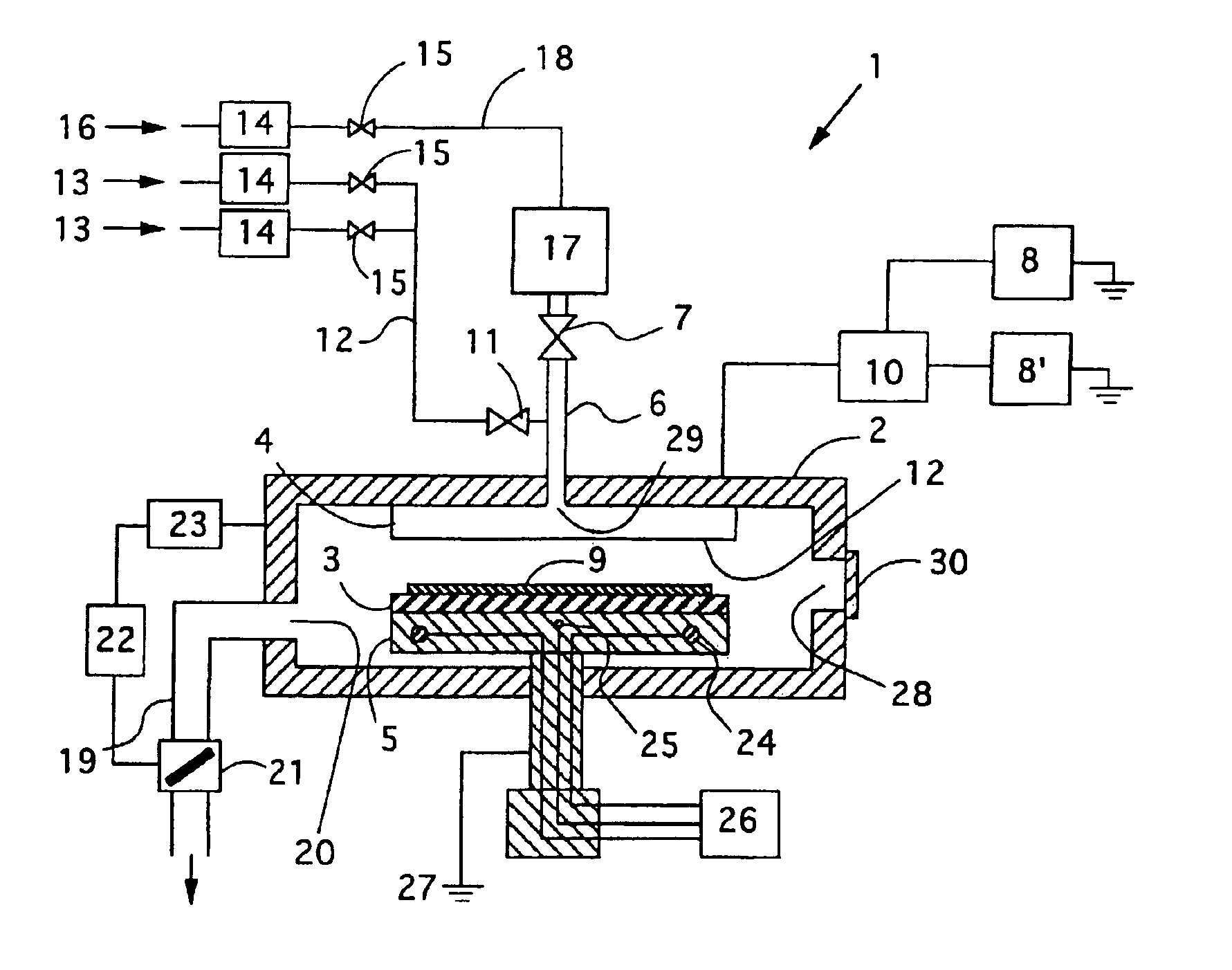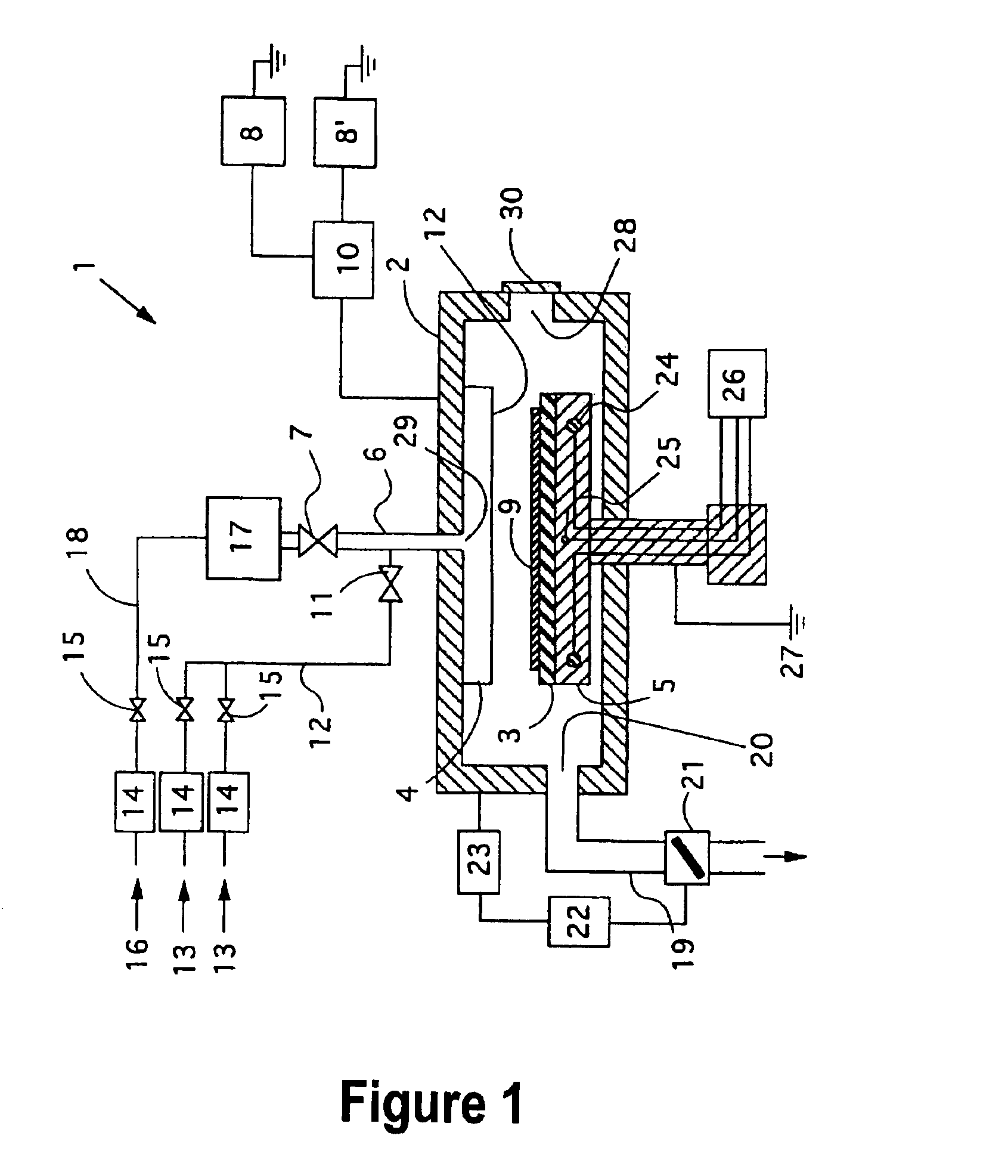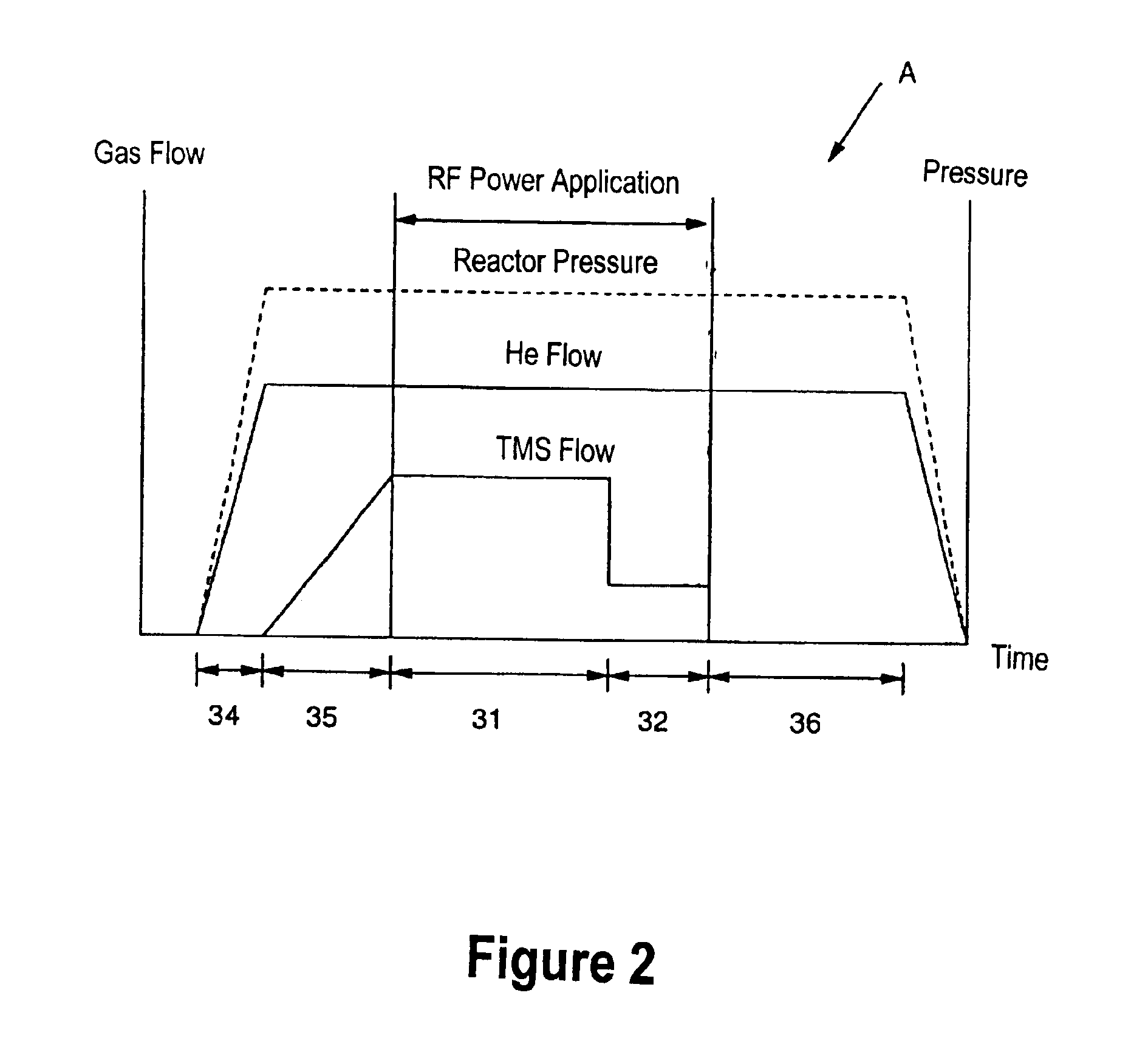Method of manufacturing silicon carbide film
- Summary
- Abstract
- Description
- Claims
- Application Information
AI Technical Summary
Benefits of technology
Problems solved by technology
Method used
Image
Examples
example 1
4) Example 1 Sequence F
First Deposition Step:
[0070]
Deposi-ReactiontionTMSHeChamberTemp.Flow RateFlow RatePressure27.12 MHz400 kHz330° C.300 sccm500 sccm600 Pa400 W150 W
Second Deposition Step (Execution time: 8 seconds):
[0071]
Deposi-ReactiontionTMSHePressureTemp.Flow RateFlow RateChamber27.12 MHz400 kHz330° C.0 sccm2,500 sccm600 Pa400 W150 W
5) Example 2 Sequence F; Ar was Used as an Inert Gas
First Deposition Step:
[0072]
Deposi-ReactiontionTMSArChamberTemp.Flow RateFlow RatePressure27.12 MHz400 kHz330° C.300 sccm500 sccm600 Pa400 W150 W
Second Deposition Step (Execution time: 8 seconds):
[0073]
Deposi-ReactiontionTMSArChamberTemp.Flow RateFlow RatePressure27.12 MHz400 kHz330° C.0 sccm2,500 sccm600 Pa400 W150 W
[0074]In Examples 1 and 2, Sequence F was applied which is shown in FIG. 7. That is, the flow rate of the raw material gas was discontinuously increased, whereas the flow rate of the inert gas was continuously decreased to zero. As with the other figures, the axes of FIG. 7 are not a...
PUM
| Property | Measurement | Unit |
|---|---|---|
| Temperature | aaaaa | aaaaa |
| Time | aaaaa | aaaaa |
| Thickness | aaaaa | aaaaa |
Abstract
Description
Claims
Application Information
 Login to View More
Login to View More - R&D
- Intellectual Property
- Life Sciences
- Materials
- Tech Scout
- Unparalleled Data Quality
- Higher Quality Content
- 60% Fewer Hallucinations
Browse by: Latest US Patents, China's latest patents, Technical Efficacy Thesaurus, Application Domain, Technology Topic, Popular Technical Reports.
© 2025 PatSnap. All rights reserved.Legal|Privacy policy|Modern Slavery Act Transparency Statement|Sitemap|About US| Contact US: help@patsnap.com



